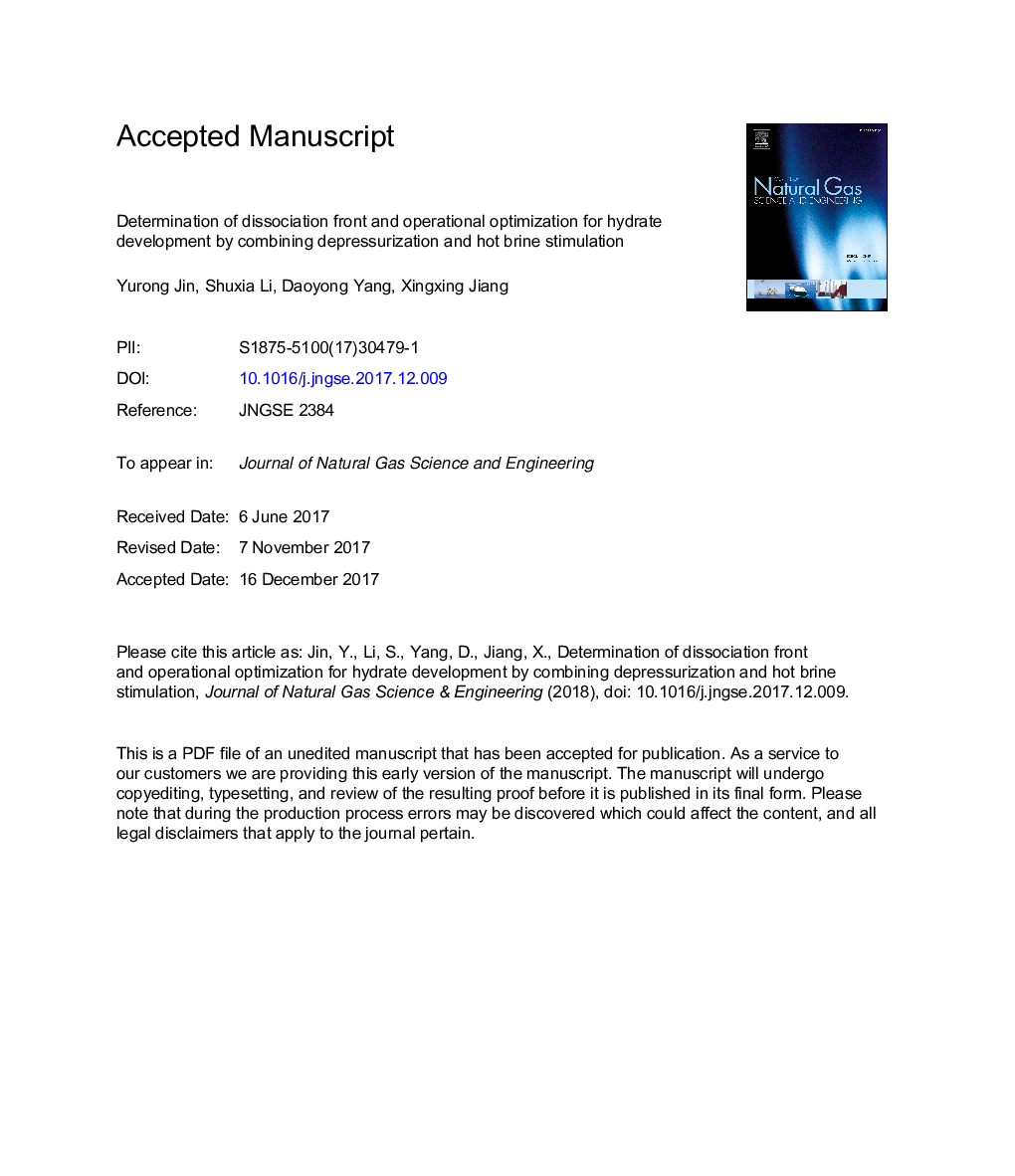| Article ID | Journal | Published Year | Pages | File Type |
|---|---|---|---|---|
| 8128414 | Journal of Natural Gas Science and Engineering | 2018 | 48 Pages |
Abstract
Techniques have been developed to determine dissociation front (i.e., the boundary where hydrate saturation is decreased to 0) for hydrate development by combining depressurization and hot brine stimulation. Experimentally, hydrate dissociation is determined with a one-dimensional (1D) model by gradually injecting hot brine to examine gas and water production. Theoretically, simulation techniques are employed to determine the decay rate and relative permeability by fitting the experimental measurements. Subsequently, the numerical techniques are well matched with field test data and then extended to field applications by applying two different development methods (i.e., depressurization and combining it with hot brine injection). It is found that the combination method not only greatly improves gas recovery by approximately 35.00%, but also results in higher water production rate and lower gas water ratio compared with those of depressurization alone. The orthogonal design method is then used to perform sensitivity analysis and optimize operational parameters by maximizing energy efficiency as the objective function. The most sensitive parameters are found to be the brine temperature, producer bottomhole pressure, brine injection rate, and injection time. Two dissociation fronts are formed separately near the producer and injector, while the dissociation front of the producer is found to move slower than that of the injector due to the different driving mechanisms for the movement of two dissociation fronts.
Related Topics
Physical Sciences and Engineering
Earth and Planetary Sciences
Earth and Planetary Sciences (General)
Authors
Yurong Jin, Shuxia Li, Daoyong Yang, Xingxing Jiang,
